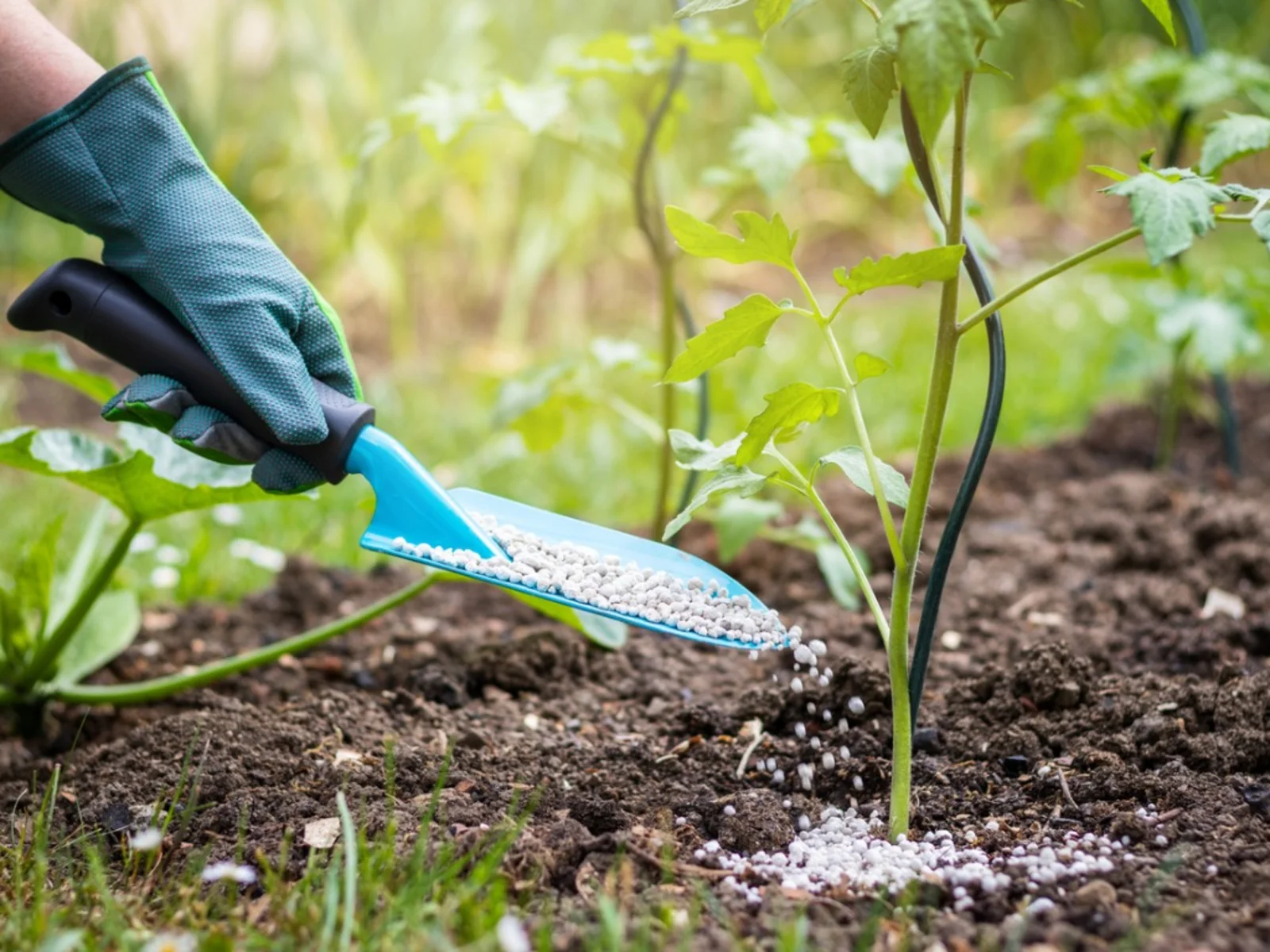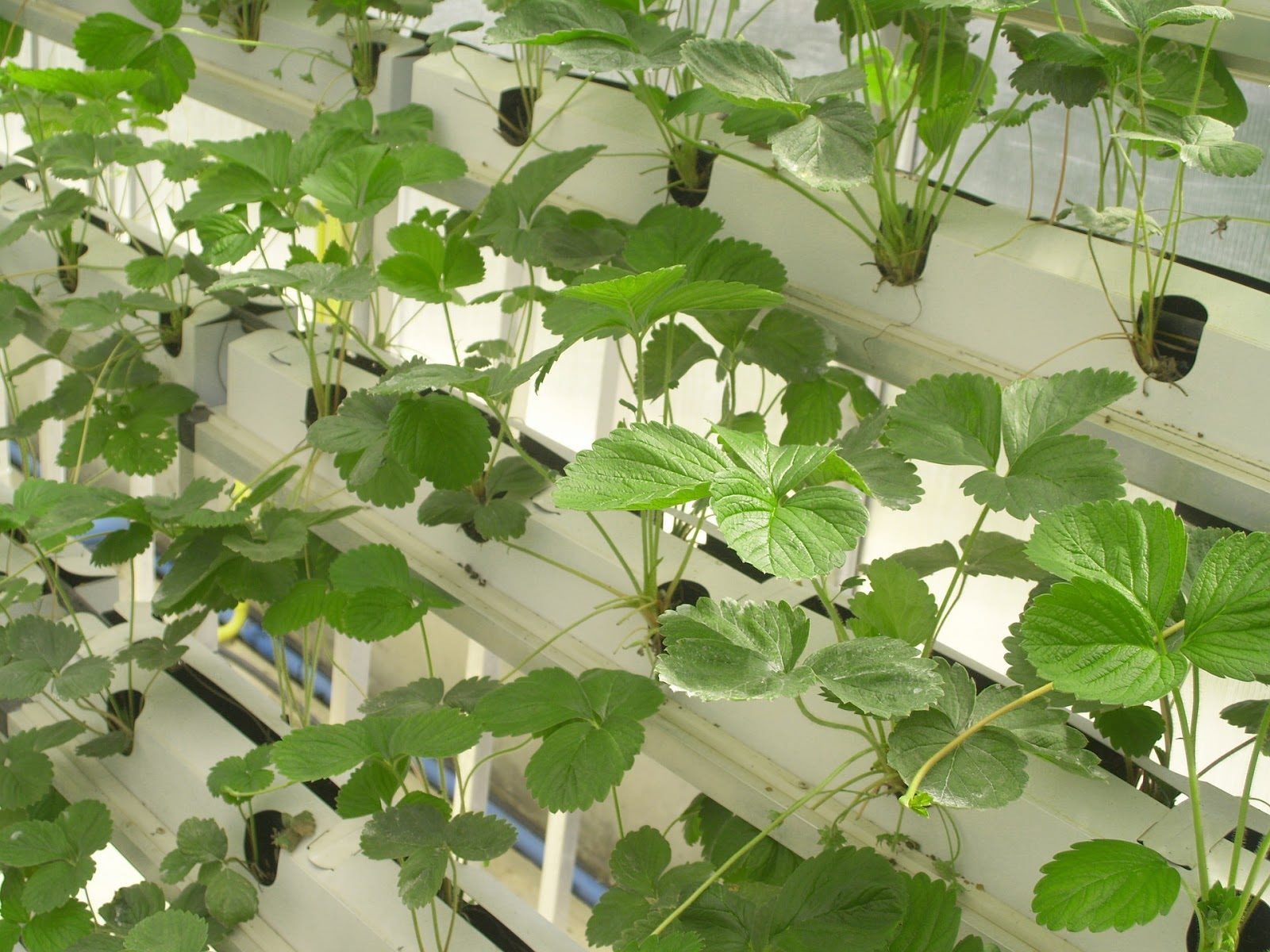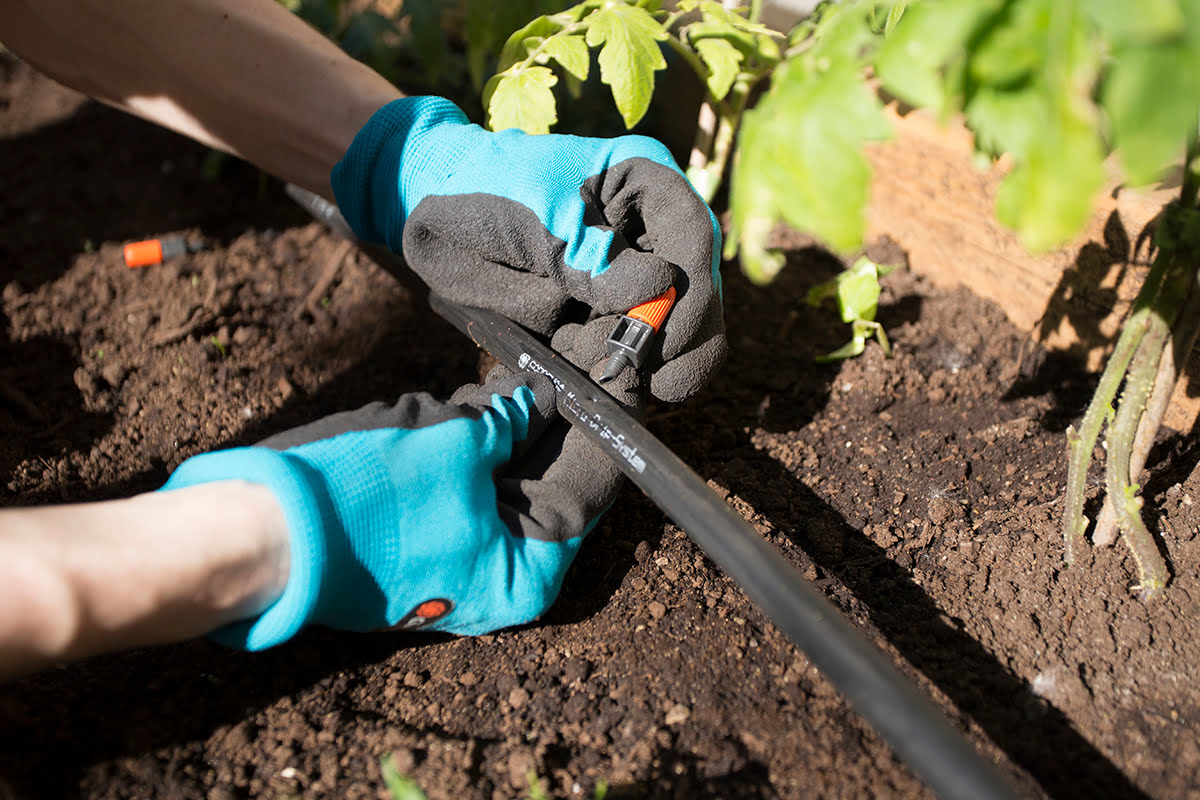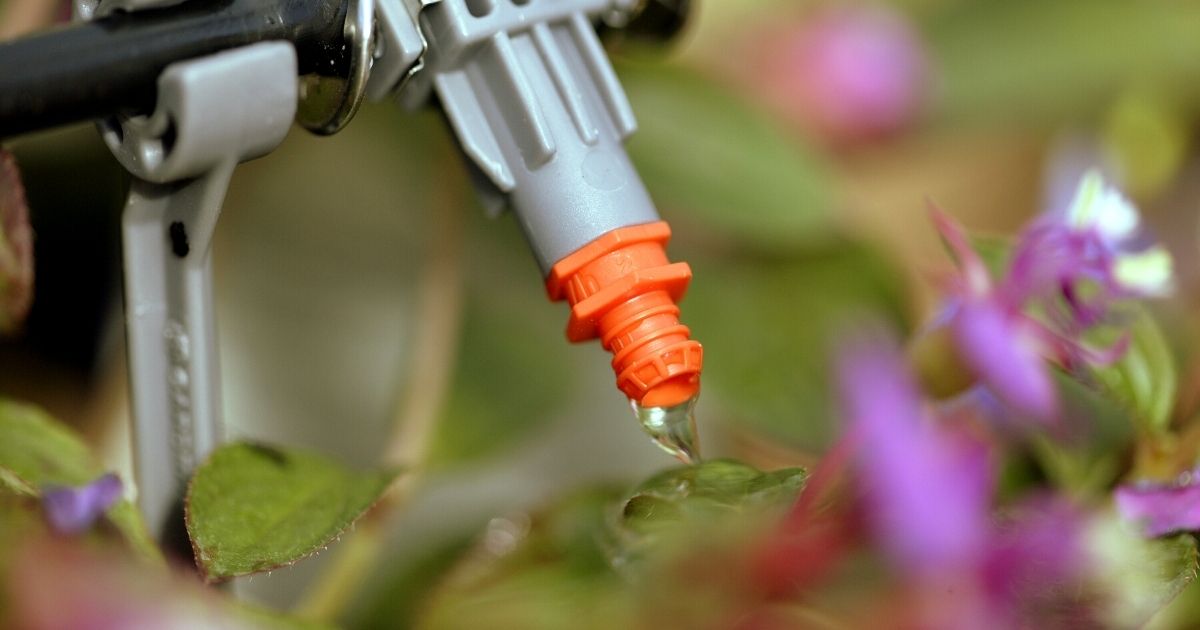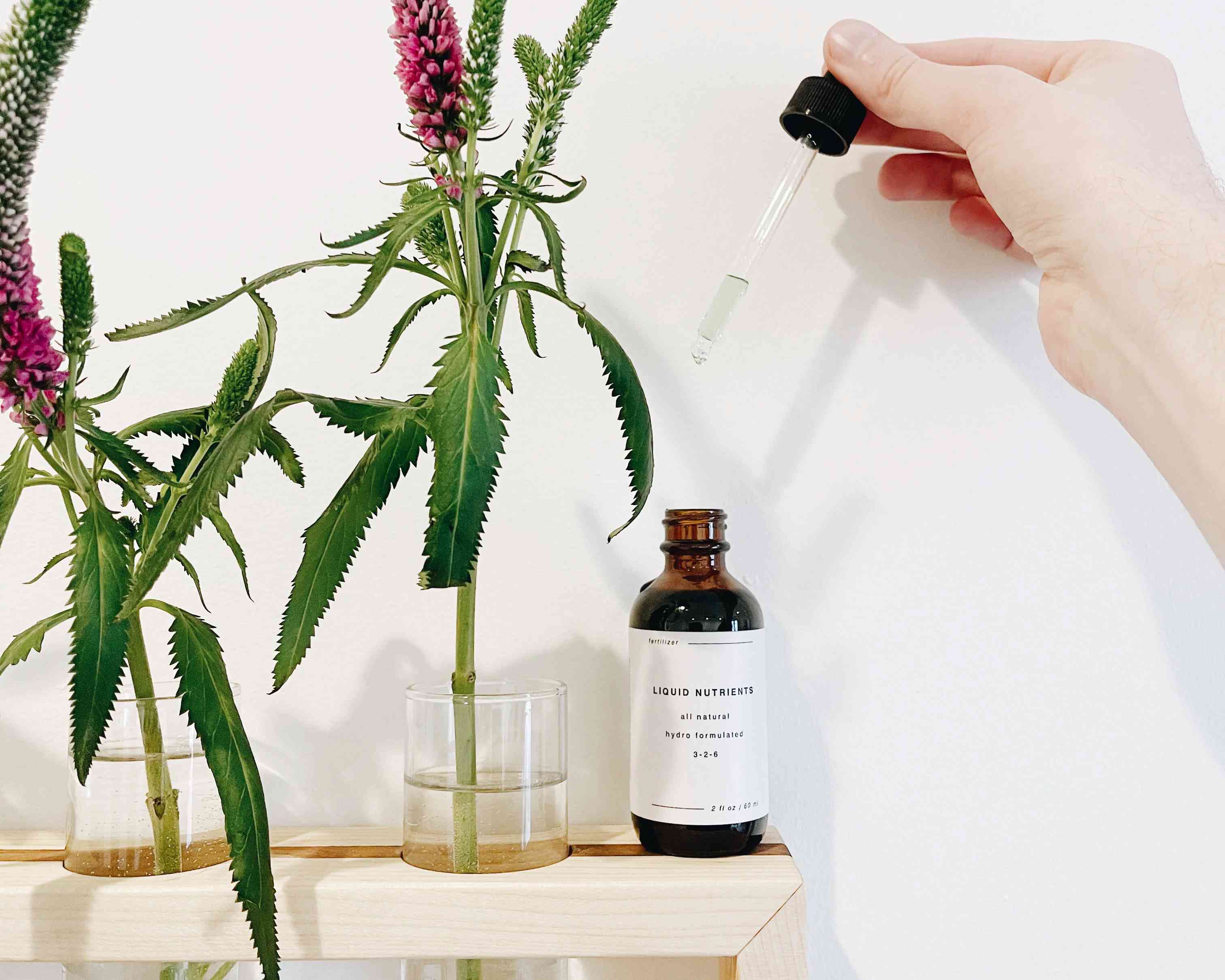Home>Gardening Basics>Understanding Soil>How To Add Potassium To Soil


Understanding Soil
How To Add Potassium To Soil
Published: February 7, 2024
Learn how to add potassium to soil and improve your understanding of soil composition. Increase your plant's nutrient intake with these simple techniques.
(Many of the links in this article redirect to a specific reviewed product. Your purchase of these products through affiliate links helps to generate commission for Chicagolandgardening.com, at no extra cost. Learn more)
Table of Contents
Introduction
Soil is the foundation of a healthy garden or agricultural field. It provides essential nutrients and support for plant growth, ensuring bountiful harvests and beautiful blooms. One crucial nutrient that plays a vital role in soil health and plant development is potassium. Potassium is an essential macronutrient required for various physiological processes in plants.
In this article, we will explore the importance of potassium in soil, signs of potassium deficiency in plants, and different ways to add potassium to your soil. By understanding the significance of this nutrient and how to replenish it effectively, you can maintain healthy soil and promote optimal plant growth.
So why is potassium so important? Potassium regulates numerous biological functions in plants, including photosynthesis, nutrient uptake, protein synthesis, and water regulation. It also aids in the activation of enzymes necessary for plant growth and plays a crucial role in increasing crop yield and improving overall plant resistance to diseases and pests.
Potassium deficiency in soil can have detrimental effects on plant health. Common signs of potassium deficiency include stunted growth, yellowing leaves, weak stems, reduced fruit or flower production, and increased susceptibility to diseases and pests. If left unaddressed, potassium deficiency can lead to poor crop yields and overall decline in plant health.
Fortunately, there are several methods you can employ to add potassium to your soil and combat deficiency issues. This article will explore different approaches, including the use of potassium fertilizers, organic sources of potassium, composting and mulching, green manures and cover crops, and crop rotation. By utilizing these techniques, you can optimize potassium levels in your soil and promote thriving plants.
Whether you are an avid gardener or a farmer, understanding how to add potassium to your soil is crucial for maintaining optimal soil health and encouraging robust plant growth. Let’s delve deeper into each method and explore how to effectively replenish potassium levels in your soil.
Importance of Potassium in Soil
Potassium is one of the essential macronutrients required by plants for their proper growth and development. It plays a crucial role in a wide range of physiological processes that are vital for plant health and productivity. Understanding the importance of potassium in soil will help you effectively manage and optimize the nutrient levels in your garden or agricultural field.
One of the primary functions of potassium in plants is to regulate the opening and closing of stomata, small openings on the surface of leaves that facilitate the exchange of gases and water vapor. This regulation helps plants maintain proper water balance and temperature, making them more resilient to environmental stresses such as drought and extreme temperatures.
Potassium is also involved in the process of photosynthesis, where plants convert sunlight into energy. It aids in the synthesis of adenosine triphosphate (ATP), the primary energy molecule in plants, and stimulates the production of chlorophyll, the pigment responsible for capturing light during photosynthesis.
In addition to its role in photosynthesis, potassium plays a vital role in nutrient uptake within plants. It helps transport various nutrients from the soil to different parts of the plant, promoting overall nutrient efficiency. This is particularly important for the uptake of nitrogen and phosphorus, two other essential macronutrients for plant growth.
Potassium is also involved in the synthesis of proteins and enzymes within plants. Proteins are essential for the structure and function of plant tissues, while enzymes are involved in various metabolic processes. A sufficient supply of potassium ensures the proper functioning and efficient utilization of these proteins and enzymes, contributing to plant health and productivity.
Furthermore, potassium plays a significant role in improving plant resistance to diseases and pests. It helps strengthen cell walls, making them more resistant to penetration by pathogens and pests. Additionally, potassium enhances the production of phytoalexins, which are natural defense compounds produced by plants to ward off potential threats.
Overall, maintaining adequate potassium levels in the soil is crucial for promoting healthy plant growth, improving crop yields, and increasing the resilience of plants to environmental stresses, diseases, and pest attacks. By recognizing the importance of potassium in soil, you can take the necessary steps to provide your plants with the optimal nutrient balance they need for flourishing growth and abundant harvests.
Signs of Potassium Deficiency in Plants
Potassium deficiency in plants can have significant implications for their growth and overall health. Therefore, it is essential to be able to recognize the signs of potassium deficiency and take prompt action to address the issue. By identifying these signs early on, you can prevent further damage and ensure that your plants receive the necessary potassium for optimal growth and development.
One of the most noticeable signs of potassium deficiency is stunted growth. Plants suffering from low potassium levels typically exhibit reduced height and smaller overall size compared to healthy plants. This stunted growth can result in diminished yields and stunted fruit or flower production.
Another characteristic symptom of potassium deficiency is leaf discoloration. The leaves may turn yellow, particularly along the edges or between the veins. In some cases, the leaves may develop brown spots or streaks. These discolorations are often the result of impaired chlorophyll synthesis, which is dependent on an adequate supply of potassium.
Furthermore, plants lacking potassium tend to have weak and brittle stems. The stems may become thin and easily breakable. This weakness in the plant’s structure can result in lodging, where the plant topples over due to insufficient support.
Potassium deficiency can also impact the development and quality of fruits and flowers. Fruits may be smaller in size, have reduced sweetness, or exhibit uneven ripening. Flowers may be fewer in number, smaller in size, or have distorted petals. These issues with fruit and flower development are directly linked to the vital role potassium plays in plant physiology.
In addition to the visible signs, potassium deficiency can make plants more vulnerable to various diseases and pests. When plants lack sufficient potassium, their immune systems become weakened, making them more susceptible to attacks by pathogens and insect pests. This susceptibility to diseases and pests can further exacerbate the overall decline in plant health.
It is important to note that the symptoms of potassium deficiency can vary among plant species and may be influenced by other factors such as soil conditions and environmental stressors. Therefore, it is crucial to regularly monitor and evaluate the health of your plants, paying attention to any abnormal growth patterns or changes in leaf coloration.
By being vigilant and recognizing the signs of potassium deficiency, you can take appropriate measures to replenish potassium levels in the soil and provide your plants with the necessary nutrients for robust growth and vitality.
Ways to Add Potassium to Soil
Adding potassium to your soil is crucial for maintaining optimal nutrient levels and promoting healthy plant growth. There are several effective methods you can utilize to increase the potassium content in your soil. By employing these techniques, you can ensure that your plants have access to sufficient potassium for their growth and development.
1. Using Potassium Fertilizers: One of the most common methods to add potassium to soil is through the use of potassium fertilizers. These fertilizers contain concentrated amounts of potassium and can be easily applied to the soil. Some popular potassium fertilizers include potassium chloride, potassium sulfate, and potassium nitrate. It is important to follow the instructions on the fertilizer packaging and apply the recommended amount to avoid over-application, which can lead to nutrient imbalance or toxicity.
2. Organic Sources of Potassium: Organic methods of adding potassium to the soil involve utilizing natural sources of potassium. This can include materials such as wood ash, kelp meal, or banana peels. Wood ash is a byproduct of burning wood and contains significant amounts of potassium carbonate. Kelp meal is derived from seaweed and is rich in various nutrients, including potassium. Banana peels can be dried and crushed before being added to the soil, releasing potassium as they break down.
3. Composting and Mulching: Composting and mulching not only help improve soil structure and water retention but also contribute potassium to the soil. Organic matter, such as kitchen scraps, yard waste, and plant trimmings, can be composted to create nutrient-rich compost. This compost can be spread over the soil or incorporated during planting, releasing potassium as it decomposes. Similarly, mulching with materials like straw, leaves, or grass clippings can add potassium as they break down over time.
4. Using Green Manures and Cover Crops: Green manures and cover crops are plant species that are grown specifically to improve soil fertility. Legumes, such as clover or alfalfa, are excellent sources of potassium as they have the ability to fix atmospheric nitrogen into the soil and release potassium through their root systems. These green manures can be grown and then tilled back into the soil, providing a natural source of potassium along with other beneficial nutrients.
5. Crop Rotation: Implementing a crop rotation strategy can help maintain soil fertility and ensure a balanced supply of nutrients, including potassium. By rotating different plant species or families in your garden or field each growing season, you can avoid depleting specific nutrients from the soil. Certain crops, such as potatoes or tomatoes, are known to be heavy feeders of potassium, so alternating them with crops that have lower potassium demands can help maintain adequate levels in the soil.
By incorporating these methods into your gardening or farming practices, you can effectively add potassium to your soil and provide your plants with the essential nutrients they need for optimal growth. Experiment with different approaches and adjust them based on your specific soil conditions and plant requirements to achieve the best results.
Method 1: Using Potassium Fertilizers
Potassium fertilizers are a popular and convenient method to add potassium to your soil. These fertilizers contain concentrated amounts of potassium, making it easy to provide your plants with a boost of this essential nutrient. Here’s how you can effectively use potassium fertilizers to enrich your soil:
1. Choose the Right Fertilizer: There are various types of potassium fertilizers available, such as potassium chloride, potassium sulfate, and potassium nitrate. It is important to choose a fertilizer that suits your specific soil and plant needs. Take into consideration factors like soil pH, nutrient deficiencies, and the crop you are growing.
2. Follow Application Instructions: Read and follow the instructions on the fertilizer packaging carefully. The recommended application rate will depend on your soil’s potassium levels, the type of crop you are growing, and the fertilizer concentration. Applying too little may not provide enough potassium, while over-application can lead to nutrient imbalances or even toxicity.
3. Apply at the Right Time: It’s important to time the application of potassium fertilizers appropriately. Incorporate the fertilizer into the soil before planting or side-dress it around existing plants during the growing season. This allows the plants to efficiently absorb the potassium and maximize its benefits.
4. Understand the Form of Fertilizer: Potassium fertilizers come in various forms, including granular, liquid, and water-soluble powders. Granular fertilizers are commonly used for pre-plant applications and can be spread evenly across the soil surface. Liquid fertilizers are often used for foliar feeding or as a side dressing during the growing season. Water-soluble powders can be dissolved in water and applied directly to the soil or as a foliar spray.
5. Maintain Regular Application: Potassium is a crucial nutrient that needs to be replenished regularly, especially in high-demand crops. For some plants, it may be necessary to apply potassium fertilizers multiple times throughout the growing season to ensure a continuous supply of nutrients.
6. Consider Slow-Release Fertilizers: In addition to traditional potassium fertilizers, you may also explore slow-release or controlled-release fertilizers. These types of fertilizers release nutrients gradually over an extended period, ensuring a steady supply of potassium to the plants. Slow-release fertilizers can help reduce nutrient leaching and minimize the risk of over-fertilization.
Remember to always follow proper safety precautions when handling and applying fertilizers. Wear protective clothing and use appropriate tools or equipment to ensure your safety and the health of your plants.
Using potassium fertilizers is a reliable and efficient way to boost the potassium levels in your soil and provide your plants with the necessary nutrients for healthy growth. Combine this method with other potassium-enriching techniques to create a comprehensive nutrient management plan for your garden or farm.
Method 2: Organic Sources of Potassium
In addition to synthetic fertilizers, there are several organic sources of potassium that can effectively enrich your soil with this essential nutrient. These organic methods not only provide potassium but also contribute to the overall health and sustainability of your garden or farm. Here are some popular organic sources of potassium:
1. Wood Ash: Wood ash is a natural byproduct of burning wood, such as from fireplaces or wood-burning stoves. It contains significant amounts of potassium carbonate, making it an excellent source of potassium. Wood ash can be applied directly to the soil or mixed into compost before spreading. It is important to note that wood ash can increase soil pH, so it is recommended to monitor soil pH levels and adjust accordingly.
2. Kelp Meal: Kelp meal is derived from seaweed and is rich in various nutrients, including potassium. It can be found in garden centers or purchased online. Kelp meal can be applied to the soil directly or mixed into compost before being applied. It not only adds potassium but also provides other beneficial micronutrients and organic matter to the soil.
3. Banana Peels: Banana peels are a readily available source of potassium in many households. After eating a banana, let the peel dry out, and then crush it into small pieces. The crushed banana peels can be added to the soil, where they will gradually release potassium as they decompose. This is a simple and eco-friendly way to add potassium to your soil.
4. Coffee Grounds: Coffee grounds are another organic source of potassium. They are rich in several nutrients, including potassium, nitrogen, and phosphorus. Coffee grounds can be added directly to the soil or incorporated into compost. However, it is important to use coffee grounds in moderation, as they can alter soil pH if applied in excessive quantities.
5. Organic Compost: Composting is an effective way to recycle organic waste and create nutrient-rich compost that replenishes potassium levels in the soil. Kitchen scraps, yard waste, and plant trimmings can all be composted to produce organic matter that is high in potassium. Apply the compost to the soil before planting or as a topdressing during the growing season to provide a slow-release source of potassium to your plants.
6. Manure: Animal manure, such as cow, horse, or poultry manure, can be an excellent source of potassium. It not only provides potassium but also adds organic matter and improves soil structure. It is important to properly compost or age manure before applying it to the soil to avoid the risk of burning your plants due to excessive nitrogen content.
When using organic sources of potassium, it is essential to consider the nutritional requirements of your plants and adjust the application rates accordingly. Regular soil testing can help determine the levels of potassium in your soil, allowing you to make informed decisions about the amount and frequency of organic amendments.
By incorporating organic sources of potassium into your soil management practices, you can ensure a sustainable and nutrient-rich environment for your plants. Mixing and combining different organic materials can provide a balanced supply of potassium, along with other essential nutrients, supporting the overall health and productivity of your garden or farm.
Method 3: Composting and Mulching
Composting and mulching are effective methods to not only improve soil structure and water retention but also add essential nutrients to the soil, including potassium. These practices contribute to the overall health and fertility of your garden or agricultural field. Here’s how you can use composting and mulching to enhance potassium levels in your soil:
1. Composting: Composting is the process of decomposing organic materials to create nutrient-rich compost. Kitchen scraps, yard waste, plant trimmings, and other organic matter can be collected and piled in a compost bin or heap. As the materials break down, beneficial microorganisms transform them into a dark, crumbly, and nutrient-dense compost. This compost can be spread over the soil or incorporated before planting to increase potassium levels. The decomposition process releases potassium in a slow and controlled manner, providing a steady supply of nutrients to plants.
2. Mulching: Mulching involves covering the soil with organic materials, such as straw, leaves, wood chips, grass clippings, or other plant residues. Mulch acts as a protective layer that conserves soil moisture, suppresses weed growth, regulates soil temperature, and improves overall soil health. Organic mulches gradually decompose over time, releasing potassium and other nutrients into the soil. Mulching also helps prevent potassium leaching, especially in sandy soils, and reduces the need for frequent watering by maintaining soil moisture levels.
3. Combining Composting and Mulching: You can further enhance the benefits of composting and mulching by combining the two practices. Use compost as a topdressing over the soil, and then apply a layer of organic mulch on top. This combination provides a double dose of potassium and other nutrients while simultaneously improving soil structure, moisture retention, and weed suppression. The compost contributes immediate nutrients, while the mulch slowly releases potassium over time as it decomposes.
4. Maintain Proper Compost and Mulch Thickness: When using compost and mulch, it is important to maintain the proper thickness for optimum performance. A layer of compost that is around 1-2 inches thick is typically sufficient for providing a nutrient boost. For mulching, apply a layer that is about 2-4 inches thick, making sure to leave some space around the stems of plants to prevent crown rot or fungal diseases.
5. Monitor and Renew: Regularly monitor the compost and mulch in your garden or field. As the compost breaks down and the mulch degrades, replenish the layers as needed to maintain the desired thickness and nutrient availability. This ensures a continuous supply of potassium and supports long-term soil fertility and plant health.
Composting and mulching offer multiple benefits beyond just adding potassium to the soil. They improve soil structure, increase water retention, promote beneficial soil organisms, and reduce the need for synthetic fertilizers and pesticides. By incorporating these practices into your gardening or farming routine, you can create a sustainable and nutrient-rich environment for your plants to thrive.
Method 4: Using Green Manures and Cover Crops
Green manures and cover crops are excellent methods to add potassium and other nutrients to your soil while improving its overall fertility. These crops are specifically grown to be incorporated back into the soil, providing organic matter and releasing potassium through their root systems. Let’s explore how to effectively use green manures and cover crops to enhance potassium levels in your soil:
1. Select the Right Green Manures and Cover Crops: Choose plant species that are high in potassium and suitable for your climate and growing conditions. Legumes, such as clover, vetch, and beans, are excellent selections as they have the ability to fix atmospheric nitrogen into the soil and release potassium through their root nodules.
2. Plan Crop Rotation: Incorporate green manures and cover crops into your crop rotation plan. By alternating the growth of these crops with other crops, you can provide a continuous source of organic matter and potassium to your soil. This practice helps maintain nutrient balance and prevents the depletion of potassium and other essential nutrients from the soil.
3. Sow and Grow: Prepare the soil and sow the green manures or cover crop seeds according to the specific requirements of the chosen species. Follow the recommended seeding rates, spacing, and planting depths. Ensure proper moisture, sunlight, and temperature conditions for optimal growth.
4. Allow Adequate Growth: Let the green manures or cover crops grow for the recommended duration before incorporating them back into the soil. This period allows the plants to establish deep root systems and accumulate potassium and other nutrients from the soil.
5. Manage and Incorporate: When the green manures or cover crops reach their desired growth stage, you can either mow them down or turn them into the soil using a tiller or spade. Chop or shred the plants into smaller pieces for easier decomposition. Incorporating the green manure or cover crop residue directly into the soil allows potassium to be released gradually as it decomposes.
6. Timing Considerations: The timing of incorporating green manures or cover crops is crucial. It is best to incorporate them when they are still green and actively growing. This timing ensures that the plants have accumulated the maximum amount of potassium and organic matter while reducing the risk of weed seed germination.
7. Ongoing Soil Care: After incorporating the green manures or cover crops, continue to care for the soil by providing proper irrigation, managing weeds, and monitoring for pests and diseases. This will help maintain optimal soil conditions and maximize the benefits of using green manures and cover crops for potassium enrichment.
Green manures and cover crops not only supply potassium to the soil but also improve soil structure, enhance soil fertility, increase organic matter content, and suppress weed growth. By incorporating these plants into your crop rotation scheme, you can build up the overall health and nutrient status of your soil, leading to improved plant growth and productivity.
Method 5: Crop Rotation
Crop rotation is a well-established and effective agricultural practice that can help replenish potassium levels in the soil and improve overall soil health. By rotating different plant species or families in your garden or agricultural field from season to season, you can diversify nutrient uptake, prevent nutrient imbalances, and promote the natural replenishment of potassium. Here’s how to effectively implement crop rotation to enhance potassium levels:
1. Understand Nutrient Needs: Different plants have varying nutrient requirements, including potassium. Before designing your crop rotation plan, research the nutrient needs of each crop to ensure a proper balance. Some crops have higher potassium demands, while others may require less. Choosing a diverse range of crops allows you to address the specific nutrient needs and avoid depleting potassium levels in the soil.
2. Consider Plant Families: Certain plant families are known to have similar nutrient requirements. By rotating crops within the same family, you can prevent the cumulative depletion of specific nutrients. For example, nightshade family crops, such as tomatoes and peppers, generally have high potassium demands. Alternating them with legume family crops, which have the ability to fix atmospheric nitrogen and release potassium, can help maintain nutrient balance in the soil.
3. Plan Rotation Sequence: Develop a crop rotation sequence that considers the nutrient requirements, growth habits, and disease susceptibility of different crops. Ideally, rotate crops in a way that avoids planting the same crop or closely related crops in the same area for at least three years. This time frame allows sufficient time for natural nutrient replenishment and reduces the risk of disease carryover from one season to the next.
4. Incorporate Nitrogen-Fixing Legumes: Legume crops, such as beans, peas, or clover, should be an integral part of your crop rotation plan. These plants have the ability to fix atmospheric nitrogen through a symbiotic relationship with nitrogen-fixing bacteria. This process enriches the soil with nitrogen, indirectly contributing to potassium availability by improving overall plant health and nutrient uptake.
5. Alternate High-Demand Crops: Some crops, such as potatoes or tomatoes, are known to be heavy feeders of potassium and other nutrients. To prevent excessive depletion, alternate these high-demand crops with low-demand crops in your rotation plan. This strategy allows the soil to recover and regain nutrient levels before reintroducing potassium-demanding crops.
6. Include Fallowing or Cover Crops: Introduce fallow periods or cover crops in your rotation scheme. Fallowing involves leaving a field unplanted for a season, giving it a chance to naturally regenerate and restore nutrient levels. Alternatively, cover crops can be grown during the off-season to protect and improve the soil. These cover crops can be chosen for their ability to scavenge and accumulate nutrients like potassium from deep within the soil profile.
By incorporating crop rotation practices, you can optimize potassium levels in the soil over time and support sustainable agricultural practices. Crop rotation not only helps replenish potassium but also minimizes the risk of soilborne diseases, reduces pest pressure, and promotes overall soil health and fertility. Implementing a well-planned crop rotation plan can significantly enhance the long-term productivity and sustainability of your garden or farm.
Conclusion
Maintaining optimal potassium levels in the soil is crucial for promoting healthy plant growth, increasing crop yields, and enhancing overall soil fertility. In this article, we explored various methods to add potassium to your soil, including the use of potassium fertilizers, organic sources of potassium, composting and mulching, green manures and cover crops, and crop rotation.
Potassium plays a vital role in plant growth and development, regulating essential physiological processes such as photosynthesis, nutrient uptake, and enzyme activation. Signs of potassium deficiency in plants include stunted growth, yellowing leaves, weak stems, reduced fruit or flower production, and increased susceptibility to diseases and pests.
Using potassium fertilizers provides a quick and concentrated source of potassium, allowing you to easily address deficiencies in your soil. Organic sources of potassium, such as wood ash, kelp meal, banana peels, and compost, are environmentally friendly alternatives that contribute to soil health and sustainability.
Composting and mulching not only enhance soil structure and water retention but also add potassium to the soil through the gradual decomposition of organic materials. Green manures and cover crops, when incorporated back into the soil, release potassium and other essential nutrients, improving overall soil fertility and health.
Crop rotation is another valuable technique that helps replenish potassium levels by diversifying nutrient uptake, preventing imbalance, and managing disease pressures. Incorporating nitrogen-fixing legumes and alternating high-demand crops contribute to the efficient utilization of potassium resources in the soil.
By employing these methods and customizing them to suit your specific soil and plant requirements, you can enrich your soil with potassium and create an environment for thriving plants and successful harvests. Regular soil testing, monitoring plant health, and adjusting nutrient management practices will ensure proper potassium levels and sustainable soil fertility in the long run.
Remember, maintaining optimal potassium levels in the soil is just one aspect of effective soil management. Taking a holistic approach, including proper irrigation, pest and disease control, and overall soil fertility management, is key to achieving healthy, productive, and sustainable gardens or farms.
